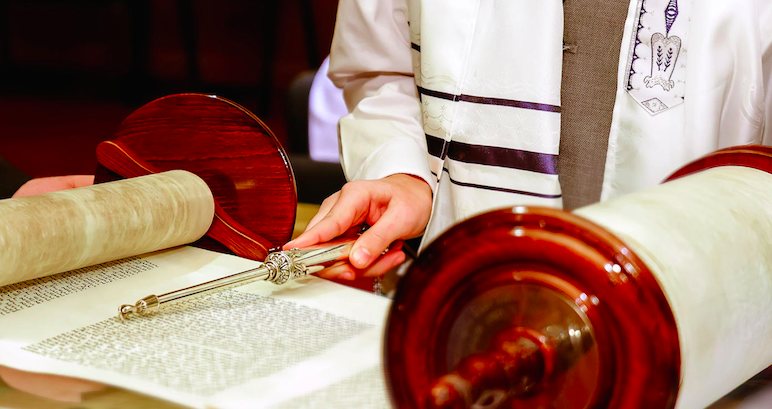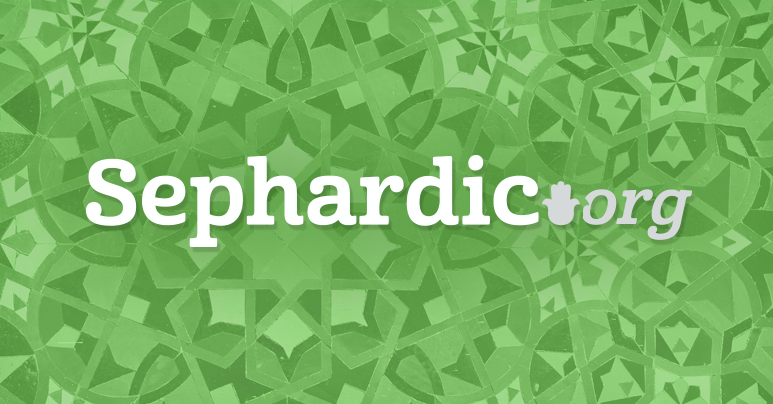
A reading of our Parasha begs one to ask why Kohanim would be required to don special clothing in order to perform the service in the Mishkan? Similarly, we can ask, why are we required to wear special clothing in honor of the Shabbat? The answer to our query requires the following introductory thoughts.
A. Throughout the 15th chapter of tractate Shabbat we see our sages almost exclusively calling clothing, כלים or vessels.
B. These vessels are termed by R. Yohanan (113) as something which reveal "Honor".
C. Furthermore, R. Yohanan teaches that we are to learn from the verse in Vayikra (6:4) "He shall remove garments and don other garments", that it is appropriate for one to change his garments according to the occasion or spiritual task at hand. Namely, depending on ones service or spiritual ascent or descent he might be required to change his clothes.
Garments - Reveal a Specific Spiritual Level
With this introduction we can begin to appreciate exactly for what purpose the garments of the Kohen Gadol were to serve. As he performs his service in the Mishkan the garments known Rabbinically as כלים or vessels are to act as the vehicles to reveal the spiritual levels of כבוד and תפארת that are associated with his service. As the verse says "Make Holy garments for Aharon your brother that are honorable and beautiful".
The terms Honor כבוד and Beauty תפארת are not mere terms for new and dignified. Rather it appears to me that these are terms for two types of spiritual light his garments are to reveal. His uniform which he wears all year around consists of eight garments. Four of these are exclusive to him (gold) and reflect the four letter divine name as it is pronounced ADNY. The other four garments are of the type shared by ordinary Kohanim and are basically white and reflect the four letter divine name of YHVH.
Producing these Vessels
And you shall speak to all who are wise hearted, whom I have filled with the spirit of wisdom, that they make Aharon's garments to consecrate him...(28:3). The vessels or garment sets known as ADNY and YHVH are able to operate in their intended function only when produced by those with חכמה wisdom and בינה understanding. When these two cerebral assets are properly applied, the resulting garments or vessels function as proper receptacles of divine light.
Vessels not formed with the assistance of these higher spiritual aspects cannot retain the Divine Light they are intended to hold and reveal. Those initiated in the writings of R. HaAri know that without the spiritual channels called wisdom and understanding a vessel cannot function and will spiritually break. (This is the secret of Shevirat HaKelim).
White Garments of the Kohanim
The uniform of the ordinary Kohanim consist of the four white garments. The verse in Tesave (28) states, "And for Aharon's sons...". These parallel to some extent the garments worn by the Kohen Gadol on Yom Kippour in the Kodesh. They are the tunic, pants, belt and turban. All of these garments are to be made of flax - linen. These evidently reflect the vessel of the four letter divine name YHVH. It is fascinating to note that in scripture (Yehezkel 9,11 and Daniel 10,12) we see that even angels of the heavenly entourage are represented as clothed in linen.
Kabbalat Shabbat - Garments
The Gemara in Shabbat teaches that the sages would change their clothing prior to reciting Kabbalat Shabbat. At that time of the week there is a spiritual ascent of the worlds. The Shehina also known by the term "Honor" is now being clothed in a higher level that it had been during the week. This requires us to change from our weekday vessels into special Shabbat vessels in order to properly reveal or clothe the Honor of Shabbat.
The Requirement to Change our Garments to Reveal Light of Shabbat
R. Hayyim Vital cites that his teacher R. HaAri was particular to don each Shabbat four white garments which parallel the Shem YHVH. This, he writes is in the secret of the clothing of the World of Beri'ah. This world is what we referenced above, that is to act as the spiritual garment of the Shehina during the Shabbat. This is the secret of Tehillim 93 "YHVH has reigned he has attired himself in pride..." Furthermore R. Hayyim notes that the color and quality of clothing one wears on Shabbat in this epoch, his soul would don each Shabbat in a future epoch. This is hinted at in the Talmud (Sanhedrin 90) that teaches "the dead will arise clad in their garments".
A Strict Ruling of R. Haari
It is clear from a teaching of R. Yanai found in Shabbat (114), that white clothing is related to a bridegroom and associated with the garments of the righteous in Gan Eden. Black clothing on the other hand is associated with mourning. Hence, R. Hayyim Vital writes that during one Kabbalat Shabbat a soul who had passed away during his lifetime appeared before R. HaAri.
The latter saw that this soul was donned in black in the spiritual world; The soul claimed that he was being punished for wearing black clothing on Shabbat during his lifetime. While white clothing acts as a vessel for the Shehina in its state of ascendancy, black clothing reflects the Shehina in a state of descent.
Garments of Shabbat
The ruling of Shulhan Arukh is that one should merely wear special nice clothing in "honor" of Shabbat. According to R. HaAri, there is at least a measure of saintliness for one who wears four white garments (outer garment, inner garment, sash upon inner garment and shirt placed over flesh). Furthermore, even if one is not able to wear the four white garments one might want to be careful not to don garments of mourning (black) on Shabbat. It is admittedly puzzling why many are not concerned with this teaching: especially considering what R. Hayyim Vital has written. When an associate asked one of the leading scholars of our generation about this; the scholar replied simply that this what they are accustomed to do. Could they be relying on the idea that today's black might not be considered clothing of mourning? For a more complete review of the subject see Kaf HaHayyim OH 262.
The Shabbat Table
The Shabbat dining table is considered as set before Hashem. Even this inanimate object must be prepared to reveal the divine light of Shabbat. Hence the ruling of Shulhan Arukh (OH 262) and the later authorities that setting a table cloth is an Halakhic requirement. This is so even if one will be eating the minimum amount required for Shabbat. We see that the requirement to garb oneself or ones table in honor of the Shabbat is not merely "to look nice" but rather the covering is the physical vessel to reveal the special divine light.








